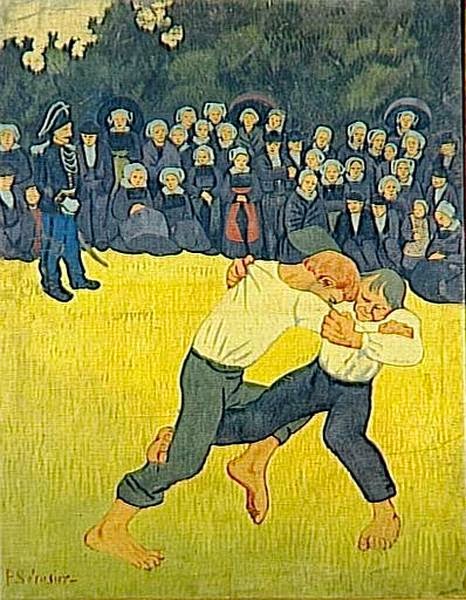
With the skies gray and the rain falling, I was more than happy to head into the museum to do some sketching. The Picasso museum was closed, so I returned to the Pompidou, and later visited the Museum of Modern Art on the western banks of the Seine. Cubism has been the anthem of the week for my independent study project ‘Art Embodied’. Above, view from the Pompidou!
Cubism was an extremely influential artistic movement
launched in Paris around 1904. Pablo Picasso and Georges Braque exploded the
notion of the single perspective point — an element of painting that had been
taken as a given since, well, painting itself.
‘I paint what I think, not what I see,’ Picasso said in a
quote that sums up the conceptual bent of cubism. Cubists instigated what some
refer to as a ‘crisis of the realist illusion’ — a dramatic way to say they
stopped representing the world around them as it was perceived by the eye.
Several elements of cubism have ramifications on how the
human figure is represented, and how human anatomy factors into the equation.
Cubist works often feature numerous points of view at the
same time. This approach is what lends many cubist works a sort of deformed
quality, with planes that would normally be hidden brought into the plane of
the two dimensional canvas. In terms of the human figure in these works, it
means anatomy is largely disregarded. The artist’s goal is not to recreate the
world, or the human body, as they see it, but rather how they interpret it
conceptually and choose to represent artistically.
Cubist works are often dominated by an overwhelming
planarity. Depth falls to the wayside as the entire subject matter is flattened
into a single plane. Graident shading is rarely used, replaced by uniform
shapes of color. It is shape and contour that gives these works their form.
On top of being flattened, the human body is often
simplified in cubist works. The figures are the product of a complicated
process of artistic digestion, in which the cubist takes in visual information,
process it, and reinterprets it in an autonomous way. For the cubist this
process often results in the streamlining of visual information. The cubist
opts for the efficient mark — a triangle for a nose, a circle and dot for a
breast, a large arc for a hip.
These three elements — multi perspectives, planarity, and
simplification of form, guide the cubist’s representation of the human figure.
To understand these principles in a more concrete way, I tried my hand at
cubism in my sketches this week:
I also observed Cubist works in person to understand how the
human figure was reduced to a planes.
‘La Ville de Paris,’ a large-scale painting in the Modern
Art Museum of Paris, was painted by Robert Delaunay in 1910 and is a good
example of human figures painted in the cubist fashion. The work features
buildings in Paris interspersed with three female figures. At the same time,
the simplified faces of the three figures are an explicit allusion to Pablo
Picasso’s earlier work with cubist leanings, ‘Desmoiselles D’Avigonon.’
This work illustrates another prominent theme related to the
human body in cubist art — objectification. Delaunay said of his work ‘Les nus feminins sont des immeubles, les
immeubles des nus,’ or, ‘The female nudes are the buildings, the buildings
the nudes.’ Cubism broke the prevailing hierarchy of subject matter in the art
world, a heararhcy that traditionally valued human figures over objects and
landscapes. Through the cubist lens everything — apple or woman — was reduced
to a series of planes. In this case, the artist does not discriminate his
attention between the woman or the urban context in which they exist. As a
result the woman seem highly integrated into the landscape — a prevalent
phenomenon in cubist art.
‘Les Baigneuses, a 1912 work by Albert Gleizes breaks down
the human figure through an even more simplified prism. In this work a backs
and limbs are redued to singular planes. Anatomy is foregone for capturing the
movement and weight of the figures.
A third work hanging at the Modern art museum takes the
crisis of the realist illusion to an even further extreme than the previous
two. ‘L’oiseu bleu,’ painted by Jean Metzinger in 1913, illustrates an allegory
of two children searching for a blue bird that was very ‘en vogue’ during the
era. Lhotein reduces the narrative to a single image, simultaneously evoking
time and space. The human figure is transformed to a peach-colored grid system
of diagonal lines. Let’s just say accurate anatomy is no longer on the mind
here, and has been replaced by newfound interest in the artistic process and
the indivual artists unique interpretation and rendering of the subject.
Here are several more Cubist works at the Pompidou to
illustrate the diversity fo cubist representations of the human form: ‘Femme
Nue au Bonnet Turc’ by Pablo Picasso in 1955, ‘Explosion Lyrique Number 2’ by
Alberto Mabnelli in 1918, ‘La Proi’ by Andre Masson in 1925, and one work the
reduces the figure to a series of black and white planes, ‘Nu dans atelier’ by
French cubist Fernand Leger in 1912.
Inspired by these works, I did some sketching myself:
I was especially intrigued by a series of marble statues and
bas-reliefs by Henri Gaudier-Brzeska in 1913-14. I found it helpful to sketch
each object several times to try simplifying it in different ways.
That’s all for cubism, next week we zoom into modernism and
wrap up our survey of anatomy through art history!

































































